10 Best and Most Expensive Samurai Swords of All Time
 |
| Top 10 World's Most Expensive Samurai Swords Of All Time. Photo: knowinsiders. |
Known for its distinctive curved blade, this style of sword dates back to the Heian period. As samurai warriors began fighting on horseback, they realized that the traditional straight sword wasn’t conducive to their changing fighting styles. Swordsmiths developed the Katana as the solution to that problem.
Many people want to own an authentic Japanese sword to connect with their heritage or because of their appreciation for the blacksmithing techniques. Sword-making in Japan is a heavily monitored industry, as the Japanese government strives to protect and encourage the historical preservation of this aspect of the culture. Because the history of Japanese swordsmithing goes back many centuries, there are many valuable ancient pieces to go along with the expensive modern pieces that are made through painstaking work.
Top 10 World's Most Expensive Samurai Swords In History
1. 16th-century Samurai Tachi sword - $100 million
2. Kamakura Katana - $418,000
3. NBTHK Tokubetsu Hozon Antique Japanese Sword Katana Signed by Gassan Sadayoshi - $32,545.02
4. Antique Japanese Sword Katana Attributed to Ko-Mihara NBTHK JUYO TOKEN Certificate - $29,445.49
5. Antique Japanese Sword Katana Signed by the second-gen Tadatsuna NBTHK Tokubetsu Hozon Certificate - $27,120.85
6. 13th Century Yamato Katana in Mounts - $23,000
7. Nbthk Tokubetsu Hozon Munetsugu Katana - $20,000
8. Antique Japanese Sword Katana Signed by Chojyusai Tsunatoshi NBTHK Tokubetsu Hozon Certificate - $18,597.15
9. Antique Japanese Sword Katana Signed by Hirosada NBTHK Tokubetsu Hozon Certificate - $17,822.27
10. Antique Japanese Sword Katana Signed by Yasuhiro NBTHK Tokubetsu Hozon Certificate - $13,172.98
*****
What are the world's most expensive samurai swords of all time?
1. 16th-century Samurai Tachi sword - $100 million
In Japanese ‘Tachi’ (太刀) means ‘Long Sword.’ It was the largest sword in Samurai’s arsenal, far bigger than Katana or Wakizashi. In fact, preceding the development of the Katana, it was Tachi that was the original traditional sword of the legendary Samurai warrior. Tachi, Katana, and Wakizashi differ not only in length and curvature, but also in how they are worn when sheathed.
This Tachi sword belonged to one of the most famous warriors and daimyos (feudal lords) in Japanese history – the great Fukushima Masanori (1561–1624). He is known as one of the Seven Spears of Shizugatake for his actions in the Battle of Shizugatake, where he had the honor of first blood. Throughout his life, he fought in many campaigns, including the Battle of Ch’ungju during the Japanese Invasion of Korea in 1592.
To this day, as worldart.news reported, Masanori is widely featured in Japanese media as a heroic Samurai warrior. It is hard to imagine that this Tachi sword was once held and possibly used in battle by Fukushima Masanori himself. Perhaps it was even the sword that drew first blood in the Battle of Shizugatake.
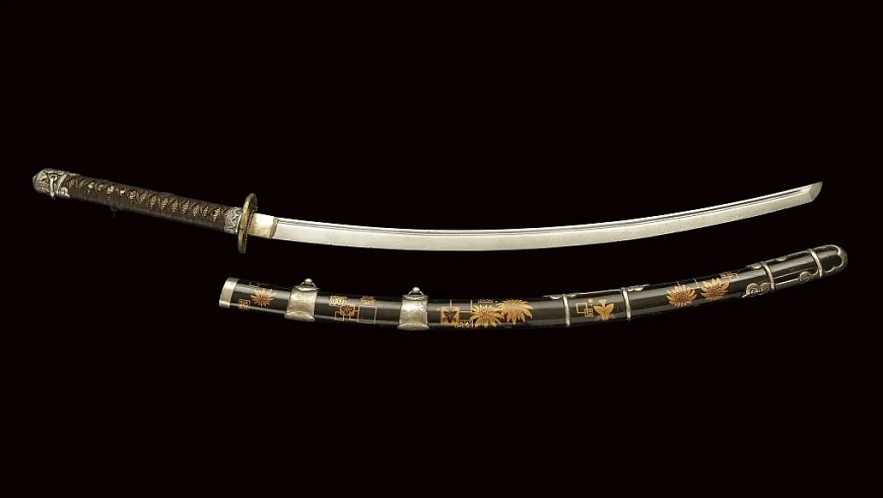 |
| Photo: Tamoikin Art Fund. |
The blade of a Samurai sword is a technological marvel. Experts around the world agree that an authentic Samurai sword is a perfection of a bladed weapon in every way. In some cases it took as much time and effort to create a well-crafted Samurai sword as it took Michelangelo to paint the ceiling of the Sistine Chapel. The decorations on these swords are works of art in themselves. It required as much artistic skill and inspiration to decorate an important Samurai sword as for Leonardo Da Vinci to paint the Mona Lisa.
| The Samurai sword symbolizes all of the best traits of the Japanese people: perfectionism, strength, elegance, ingenuity, imagination, craftsmanship, and artistic genius. Because of that, it is perhaps the most widely known bladed weapon in the world. |
2. Kamakura Katana - $418,000
• Special finish with damasquinado decorations.
• Inox AISI 420 Blade.
• Acid etching in black and gold.
• Overall: 100 cm/40 inches
• Weight: 1,5 kg
The Kamakura Katana sold in 1992. Swords of Northshire confirms that this is one of the few expensive and rare Samurai swords for sale. Most of them are kept in museums for the preservation of their historical and cultural values and they’re valued far higher than this example. The Kamakura period of Japan commenced in the year 1185 and continued through 1333. The sword is estimated to be from the Jumyo school in the Mino province of the Gifu prefecture. The name of the school means longevity.The Katana was a part of the massive sword collection of Dr. Walter Ames Compton. The blade dates back to the 13th century. It’s one of the oldest known Katanas that survived the ravages of time through the centuries.
It’s a trait conferred upon the quality of the swords they produced. There are only 125 known examples of Kamakura Katana swords to exist, and few are in such exceptional condition. Historians date this sword’s origins back to the Taima school of swordsmithing. Many of the swords made at the school were commissioned as thinner blades commissioned by monks and rarely were they ever signed by their wordsmiths. The Taima school swords came from Japan between 1288 and 1317. Few of the swords forged during the era have survived to the present.
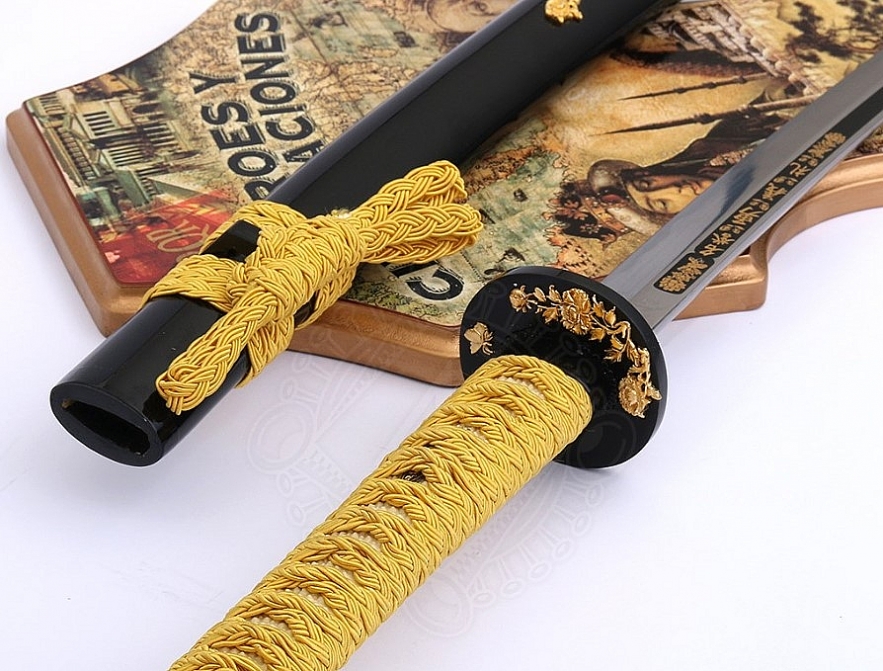 |
| Photo: outfit4events.com. |
3. NBTHK Tokubetsu Hozon Antique Japanese Sword Katana Signed by Gassan Sadayoshi - $32,545.02
Category: Katana( SHIN SHIN TO)
Age: The third year of Bunkyu era(1863: the end of the Edo period)
Swordsmith: Naniwa Jyu Gassan Sadayoshi(浪花住月山貞吉)
Certificate: NBTHK Tokubetsu Hozon Certificate
Location: Osaka
Blade Size: Length: 78.8 cm(31.0 inches), Curvature: 0.7 cm( 0.275 inches)
This blade was signed by Naniwa Jyu Gassan Sadayoshi(浪花住月山貞吉) in November, the third year of the Bunkyu era(1863), based on the signature. Naniwa is where this swordsmith lived when he forged this blade. Naniwa is located in today’s Osaka prefecture, and Jyu means living in Japanese.
Gassan Sadayoshi’s real name is Gassan Yahachiro. He was born in Dewakoku(Yamagata prefecture today) in 1781. Gassan is the name of the school he belonged to. It was initially founded during the Heian period(late 12th century). It is said that the school name “Gassan” (月山) came from the fact that they forged swords near the mountain called Gassan in Dewakoku.
In Sadayoshi’s early career, he learned sword forging technique from his father, Okuyama Yasaburo Sadachika(山弥三郎貞近), who is said to have been a descendant of a member of O-Shu Gassan school (奥州月山), one of the oldest Gassan schools.
 |
| Photo: samuraimuseum.jp. |
When Sadayoshi became about 20 years old, he went to Edo city(today’s Tokyo) to serve Suishinshi Masahide(水心子正秀) as an apprentice. Sushinshi Masahide is known as one of the most skilled and famous swordsmiths at the end of the Edo period(150-200 years ago).
After ten years of apprenticeship under Masahide, Sadayoshi mastered excellent craftsmanship. And he moved to Osaka in 1833 when he was 30 years old. He founded Osaka Gassan school there, improving his sword-forging technique even more and eventually settled there. He also trained many apprentices, who later became notable swordsmiths at the end of the Edo period.
4. Antique Japanese Sword Katana Attributed to Ko-Mihara NBTHK JUYO TOKEN Certificate - $29,445.49
This blade is attributed to *Ko-Mihara, a prestigious school in Bingo province (Today’s Hiroshima prefecture).
According to recent studies, it is general knowledge that Mihara school was founded by Kokubunji Sukekuni (国分寺助国) in the late Kamakura period (Late13th century-Early 14th century). Two of the most prominent figures in this school are Mihara Masaie (三原正家) and his son, Masahiro (正広).
Mihara school is divided into three categories in Japanese sword terminology depending on the period. When the blade is older than the Nanbokucho era(the 1300s), it is called *Ko-Mihara (Old Mihara). And it is called Mihara for those forged in the early-Mid Muromachi period. Finally, Sue-Mihara(Late Mihara) is used for the late Muromachi period. Based on the NBTHK appraisal of this blade, it was approximately forged during the late Kamakura- Nanbokucho era (Early-Late 14th century). That means it is about 600 years old.
In Bingo province, many lands were owned by politically powerful temples of the Yamato region (today’s Nara prefecture) from ancient times. And many Samurai formed military groups to protect those lands, being hired by temples. And quite a few swordsmiths moved from the Yamato region to the Bingo region to forge blades for those Samurai.
As amuraimuseum.jp reported, it is said that the swordsmiths in Yamato region strongly influenced how swords were forged in the Bingo province because of the history above. The blades forged by Mihara school had distinctive characteristics of Yamato DEN, one of the five Japanese sword traditions (Gokaden).
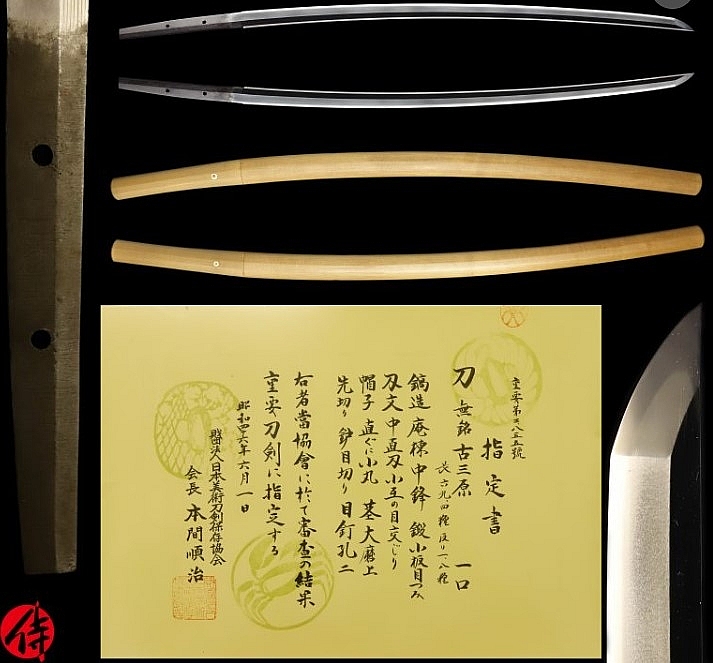 |
| Photo: samuraimuseum.jp. |
The swordsmiths in the Bingo province, including Mihara school, produced many swords during the late Kamakura period-Muromachi period due to the high demand for weapons.
Bingo is located near the Chugoku Mountains, where iron sands, one of the essential materials for making Japanese swords, were abundant. This geological location contributed to the Mihara swordsmiths forging high-quality refined blades. We presume Bingo was quite active in sword-forging from ancient times.
The swords forged in Yamato DEN tradition are famous for their beautiful Jigane, steel surface, and straight tempering line(Suguha). This blade has a beautiful Jigane with a Suguha tempering line, which shows an outstanding characteristic of the Yamato DEN sword.
5. Antique Japanese Sword Katana Signed by the second-gen Tadatsuna NBTHK Tokubetsu Hozon Certificate - $27,120.85
This blade was forged by the second-gen Awataguchi Omi no kami Tadatsuna(粟田口近江守忠綱) in the early Edo period (Late 17th century), based on the characteristic of the signature on the tang.
The second-gen Tadatsuna is one of Osaka’s most skilled and popular swordsmiths in the early Edo period, following Tsuda Sukehiro and Inoue Shinkai. These three sword makers are called Sanketsu of *Osaka Shinto.
The second-gen Tadatsuna was born in 1644 as the first son of the first-gen Tadatsuna, who called himself the descendant of Awataguchi Kunitsuna, a famous swordsmith in the early Kamakura period.
Father was born in Hyogo prefecture and forged swords in Ushiroyama castle in Mie prefecture. Eventually, the first-gen Tadatsuna moved to Osaka.
The second-gen Tadatsuna’s real name is Asai Mandayu. The swordsmith’s name Tadatsuna lasted three generations, and the second-gen is said to have been the most famous and skilled one. And he was not only excellent at forging swords with different kinds of tempering lines (Hamon) but also excellent at inscribing sculptures on his work.
The second-gen Tadatsuna first signed as Tadakuni(忠国). According to his remaining work, he started to forge swords in 1672 and kept creating his blades until he was about 80 years old(1716). He received the honorable title of Omi no Kami during Enpo era(1673-1680). He started to sign Ikkanshi Tadatsuna after the second year of Genroku era(1689).
During the early Genroku era, he used 縄 letter instead of 綱 when signing his creation, but after the mid-Genroku era, he used 綱 to sign his blades. Since this blade was signed as 忠縄, we can assume it was forged around the late 17th century. Genraoku period lasted 1688-1704.He kept forging swords for about 50 years in his career.
One of Tadatsuna’s works is designated as Important Cultural Property of Japan. His swords are Ryuwazamono and Shinto Jyojyo Saku(Highly ranked swords among Japanese sword experts).
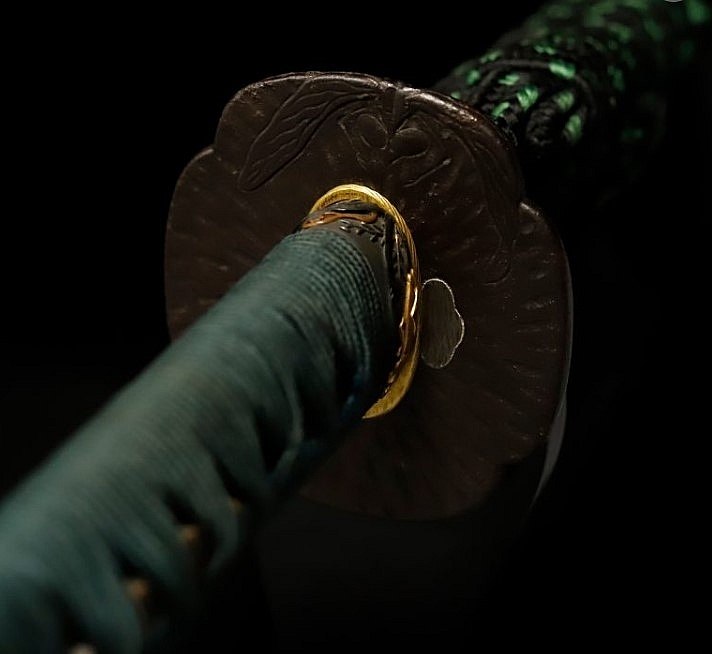 |
| Photo: samuraimuseum.jp. |
6. 13th Century Yamato Katana in Mounts - $23,750
Unique Feature: Slimmer Blades
In 2007, Christie’s auction house sold a Yamato Katana in Mounts from the 1200s — making this sword over 700 years old. The sword fetched a whopping $23,750, more than the $15-20 thousand Christie’s expected. Experts say the sword came from the Taima school of swordsmiths in Japan.
Often, as rarest.org reported, the swords designed by this school were commissioned by monks and had thinner blades, so they were rarely signed by their creators.
The Taima school has roots in Japan dating back between 1288 and 1317. Although the school remained active until the end of the 1300s, only a few Taima school swords survived the centuries.
Did you know?
Between the 7th and 19th centuries, Japan was divided into two distinct provinces. During that time, an area near present-day Kyoto was known as Yamato. Today, the region is called Nara Prefecture.
7. NBTHK Tokubetsu Hozon Munetsugu Katana - $20,000
Measurements:
Nagasa: 71.7 cm.
Sori: 1.0 cm.
Moto-haba: 3.3 cm.
Saki-haba: 2.4 cm.
Moto-gasane: 0.7 cm.
Saki-gasane: 0.5 cm.
This ancient sword dates back all the way to 1870, making it a historical relic as well as a fascinating talking piece. It’s rated by the NBTHK, with papers from 2019 certifying it as an authentic Japanese Samurai sword, as aluxurylifestyle.com reported.
The NBTHK, also known by the full name Nihon Bijutsu Token Hozon Kyokai, takes its certification process incredibly seriously, often requiring up to a full year to ensure that swords bear their backing are truly worthy of the name.
You don’t have to be an expert to admire this piece, however. Its shine, polish, and artistry are visible to the naked eye without any further inspection necessary.
If you’re hoping to own this 20,000 dollar beauty, act quickly; there’s none other like this piece in the world!
8. Antique Japanese Sword Katana Signed by Chojyusai Tsunatoshi NBTHK Tokubetsu Hozon Certificate - $18,597.15
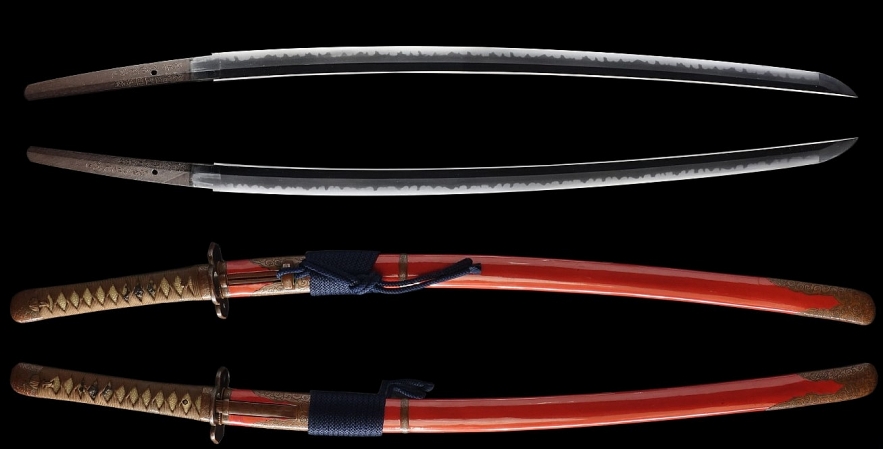 |
| Photo: samuraimuseum.jp. |
This blade was signed by Chojyusai Tsunatoshi(長寿斎綱俊) in August, the 6th year of the Ansei era (1859). The signature also says that Chounsai Koretoshi (長運斎是俊), who is the son of Tsunatoshi, was involved in this sword-forging. When two swordsmiths collaborated to create one work, it is called Gassaku (合作). It was generally done by a master and his apprentice or his son. Chojyusai Tsunatoshi is also known as the first-gen Tsunatoshi because his son also used Tsunatoshi as his maker’s name. Based on the tang, this blade was forged upon the request from Fukuda Nao-Oki (福田直興). We believe this person was a high-ranked Samurai who was wealthy enough to order a custom-made sword from a renowned swordsmith.
The first-gen Tsunatoshi was born in 1798 in Yonezawa city, Hashu province (Yamagata prefecture) as the third son of Izumi no Kami Kunihide(和泉守国英). His family name was Kato, and he was the younger brother of Kato Tsunahide. Tsunatoshi’s real name was Kato Hachiro.
He served Yonezawa Uesugi clan, a powerful feudal lord in today’s Yamagata prefecture.
During his early career, he moved to Edo city to learn superb sword-forging techniques from Suishinshi Masahide, one of the most renowned swordsmiths at the end of the Edo period.
There is also a record of him forging swords in Osaka and Kumamoto while his base was in Azabu town in Edo city (Today’s Tokyo).
He settled in Edo city around 1823, and he created most of his work. He started to run his school there and resided in the house of Uesugi family. It is said that he received a stipend from them. He received the honorable title Chounsai (長運斎) in the first year of the Bunka era (1854). And, he gave this title to his son Koretoshi (the second-gen Tsunatoshi) in 1856, and he got the new title Chojyusai (長寿斎). Chojyu means living a long life in Japanese.
9. Antique Japanese Sword Katana Signed by Hirosada NBTHK Tokubetsu Hozon Certificate - $17,822.27
Category: Katana(Shinto)
Age: Early Edo Period(Early 17th century:approx. 400 years old)
Swordsmith: Hizenkoku Jyu Hirosada(肥前国住人広貞)
Certificate: NBTHK Tokubetsu Hozon Certificate
Location: Hizen Province(Saga prefecture)
Blade Size: Length: 70.6 cm( 27.8 inches), Curvature: 1.21 cm( 0.47 inches)
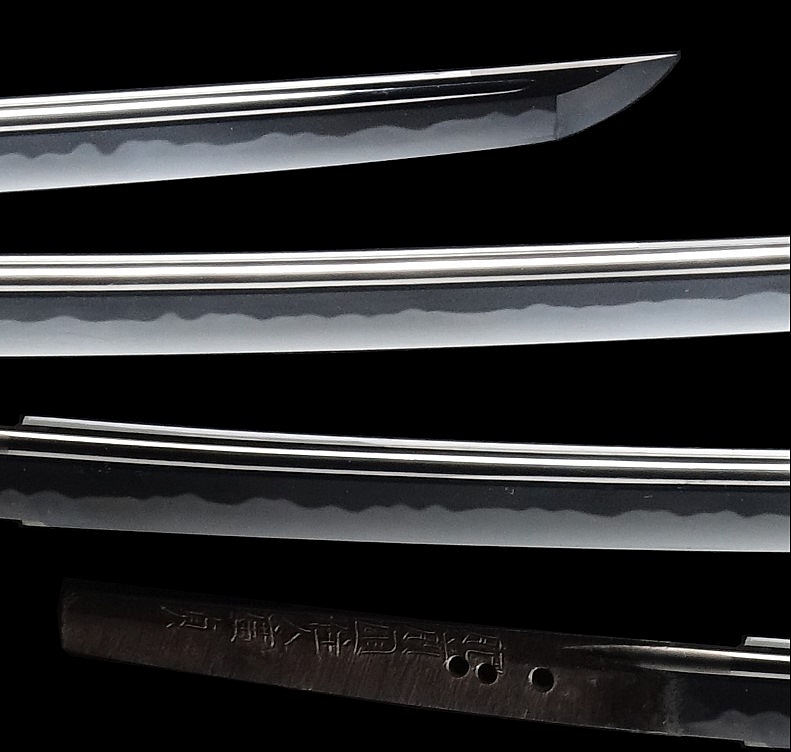 |
| Photo: samuraimuseum.jp. |
This blade was signed by Hizenkoku Jyu Hirosada(肥前国住人広貞), also known as Hizen Yoshi-Ie(肥前吉家) in the early Edo period( early 17th century). He was an apprentice of Tadayoshi, one of the greatest swordsmiths in the early Edo period.
Hirosada was also Tadayoshi’s son-in-law. His real name is Hashimoto Honsouemon(橋本本惣右衛門). Hizenkoku, located in Saga prefecture, is the name of the place where Hirosada forged this blade.
He first signed as Hirosada(広貞) but changed his maker’s name to Yoshiie in the second year of Genwa(1616). We believe this blade is one of the earliest works of Yoshiie before he changed his maker’s name.
He often forged swords on behalf of his master, Tadahiro, which means his artistry must have been excellent. He died at the age of 80 in 1656.
This swordsmith was serving for the Nabeshima clan, forging swords for the feudal family. Nabeshima clan ruled Hizenkoku during the Edo period, which indicates that Hirosada served a powerful feudal lord.
10. Antique Japanese Sword Katana Signed by Yasuhiro NBTHK Tokubetsu Hozon Certificate - $13,172.98
Category: Katana( SHINTO)
Age: Kanbun (1661-1673: Early Edo Period)
Swordsmith: Bitchu no Kami Tachibana Yasuhiro (備中守橘康広)
Certificate: NBTHK Tokubetsu Hozon Certificate
Location: Settsu (Today’s Osaka prefecture)
Blade Size: Cutting Edge Length: 73.6 cm(29.0 inches)
Curvature: 0.9 cm(0.35 inches)
This blade was signed by Bitchu no Kami Tachibana Yasuhiro(備中守橘康広). Yasuhiro was active in sword-forging during the Kanbun (1661-1673: Early Edo Period). Yasuhiro belonged to a prestigious sword school called Kishu Ishido and Osaka Ishido School.
His father, Tosa Shogen Tachibana Yasuhiro(土佐将監橘康廣), was born in Omi province, located in Shiga prefecture. And he belonged to Omi Ishido school during the early Edo period. Ishido school was initially founded by Sukenaga, an offspring of Ichimonji Sukemune, who made Fukuoka Ichimonji school in Bizen province(Today’s Okayama prefecture). During 1492-1501(Late Muromachi period), Sukenaga and his school moved from Bizen province to Omi province after being summoned by Gamou family, a powerful feudal line in that region. Sukenaga started to live in front of Ishido temple, and he changed his surname to Ishido.
As of the early Edo period, many Ishido swordsmiths moved to other parts of Japan, looking for better opportunities. There are four areas: Edo, Osaka, Kishu(Wakayama prefecture), and Chikuzen(Fukuoka prefecture). Omi Ishido school is the origin of whole other Ishido branches that flourished during the Edo period.
Following this trend, Yasuhiro’s father, who belonged to Omi Ishido school, moved from Omi province to Kishu province. It is said that the father was the founder of Kishu Ishido school and played an essential role in making this school prosperous.
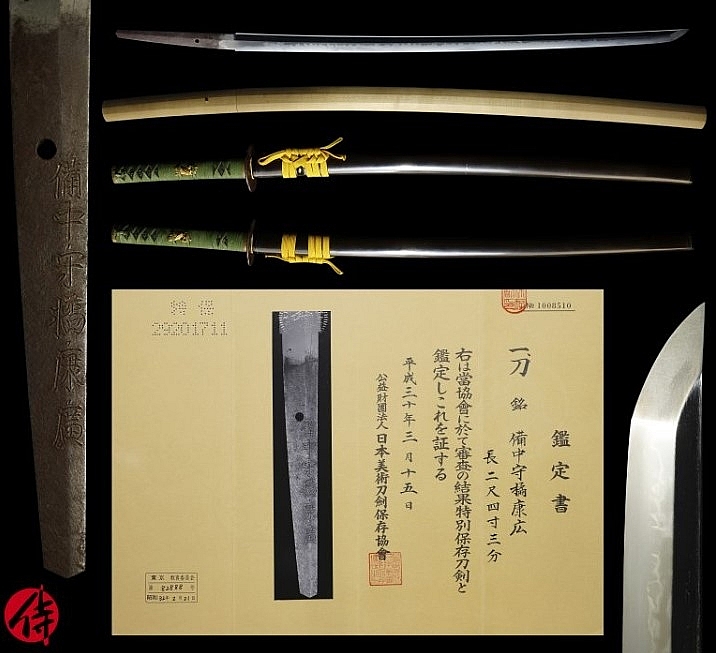 |
| Photo: samuraimuseum.jp. |
Yasuhiro was born as the son of the head of Kishu Ishido school. And he mastered excellent sword forging techniques from his father. And it is said that Yasuhiro served Tokugawa Yorinobu, the first head of Kishu domain, who was the 10th son of Tokugawa Ieyasu. Yasuhiro exclusively forged swords for Kishu domain for many years.
Later in his career, Yasuhiro received the honorable title “Bitchu no Kami” in 1657 and moved to Settsu city in Osaka to spread the tradition of Ishido school. He built the foundation of Osaka Sekido school. Yasuhiro is known as one of the most prominent figures that made Osaka Isido school prosperous during the early Edo period.
Osaka city flourished as a castle town and became the business center during the early Edo period. Many swordsmiths moved to Osaka to look for better opportunities. They not only forged swords for those Samurai who lived in Osaka but also for feudal lords nationwide. Among many swordsmiths active in the same period as Yasuhiro, he was one of the most famous figures in Osaka Ishido school.
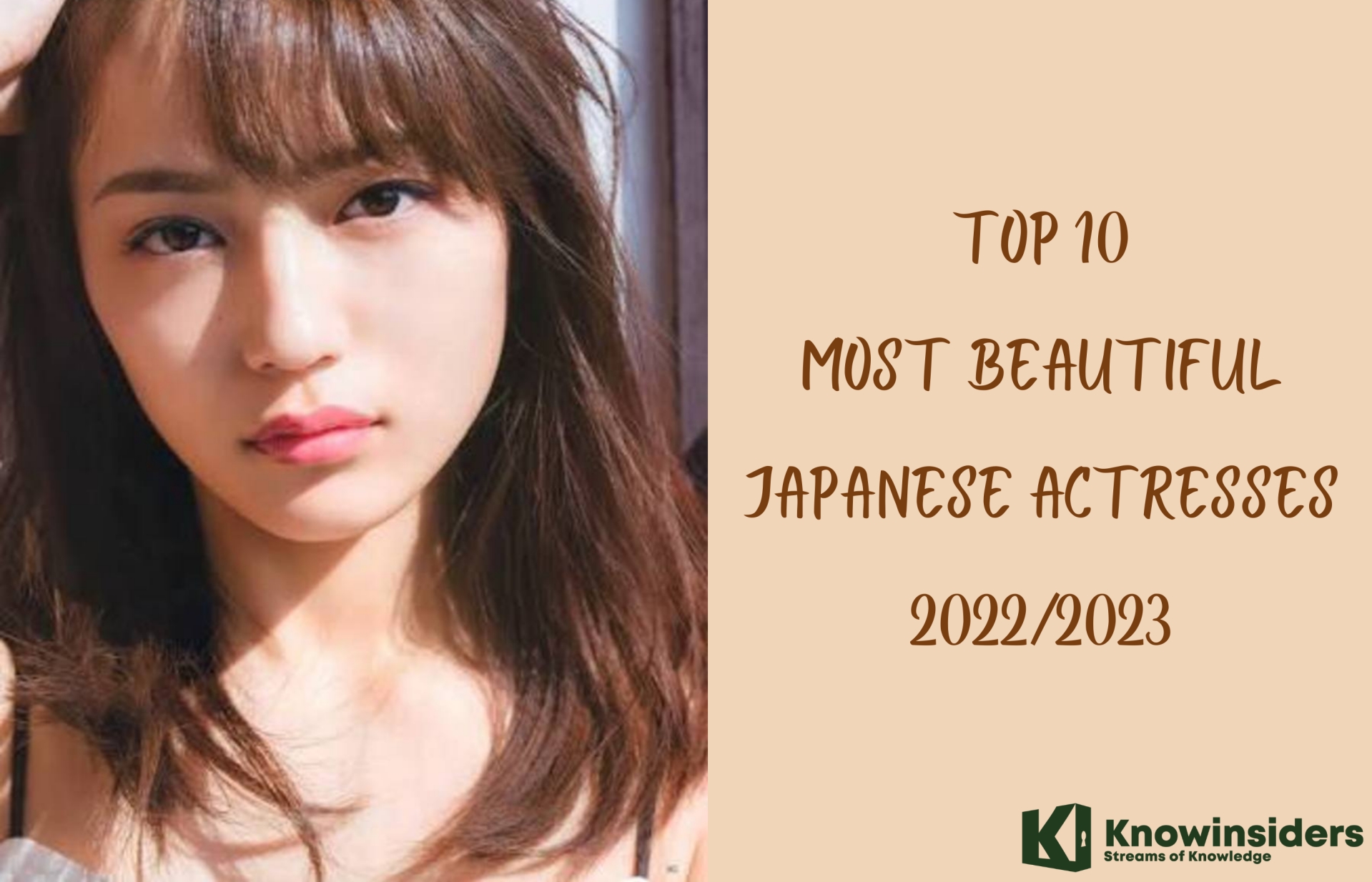 Top 10 Most Beautiful and Hottest Japanese Actresses 2022/2023 Top 10 Most Beautiful and Hottest Japanese Actresses 2022/2023 If you are into the Japanese culture and wish to know more about the Japanese entertainment industry, you should know these famous Japanese actresses below. ... |
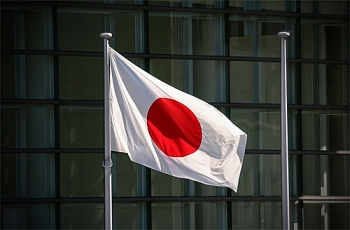 What Is Japan’s National Anthem: History, Full Lyrics, Shortest and Oldest In The World What Is Japan’s National Anthem: History, Full Lyrics, Shortest and Oldest In The World Japan’s national anthem is one of the shortest in the world. Read on to know more about its history and lyrics. |
 How To Celebrate Japanese New Year: Traditions, Customs and Taboos How To Celebrate Japanese New Year: Traditions, Customs and Taboos New Year is only a step away, and if you want to learn more about how Japanese celebrate this time, keep reading the article below. |























